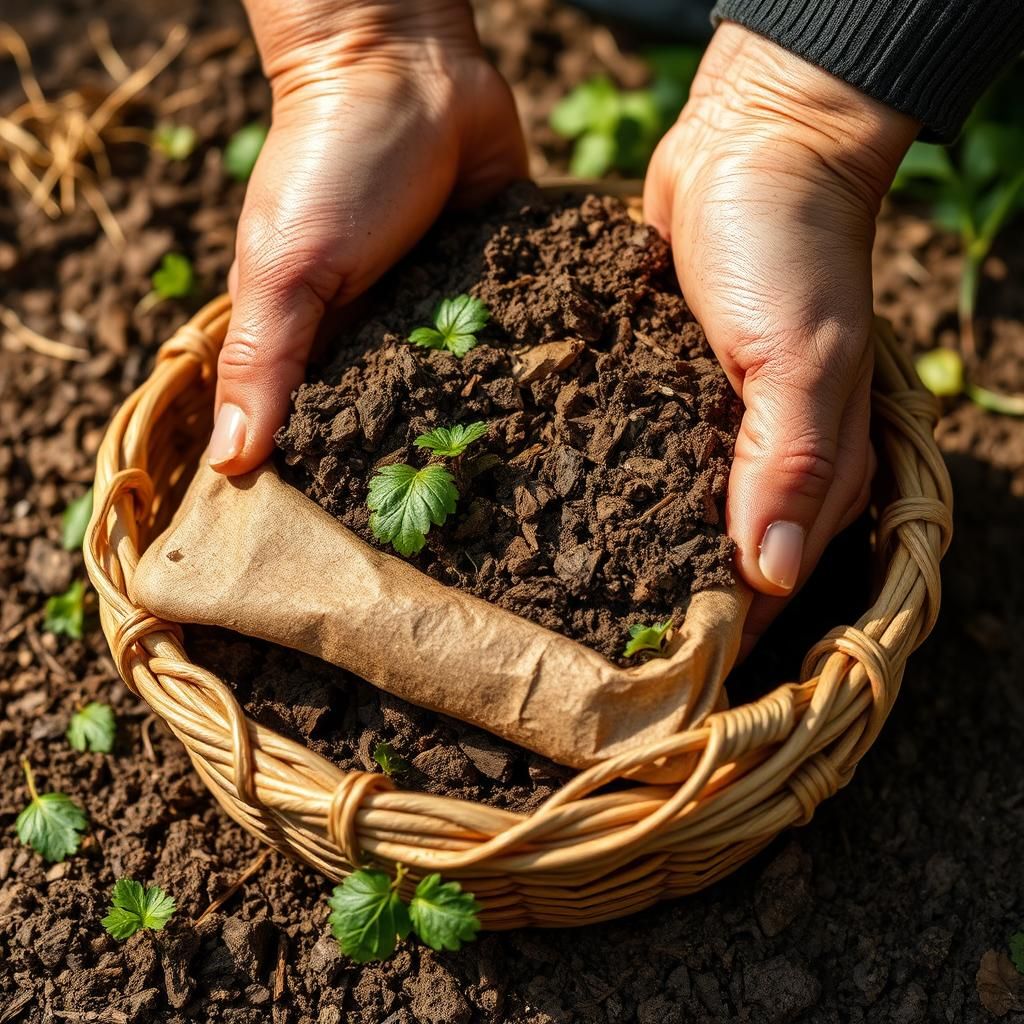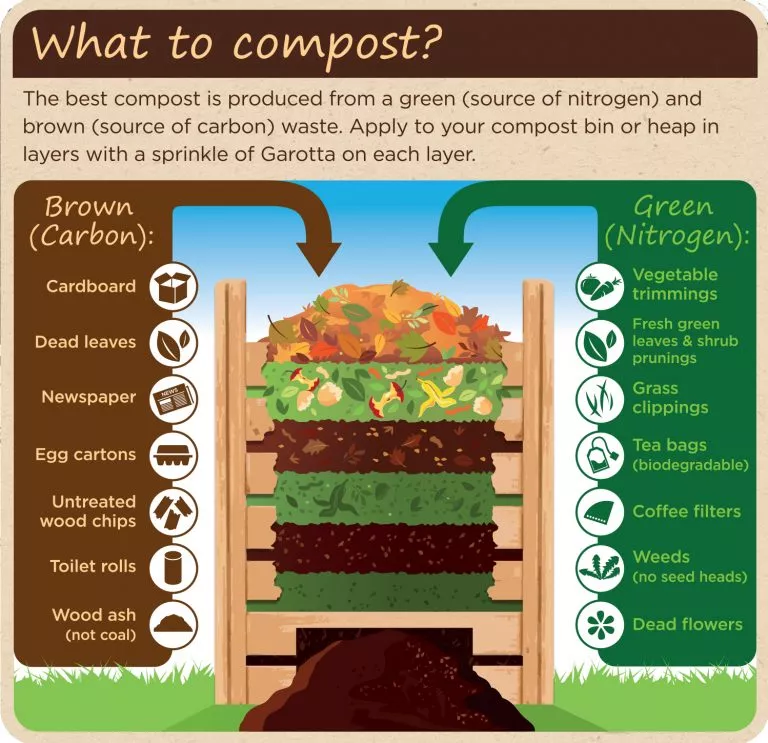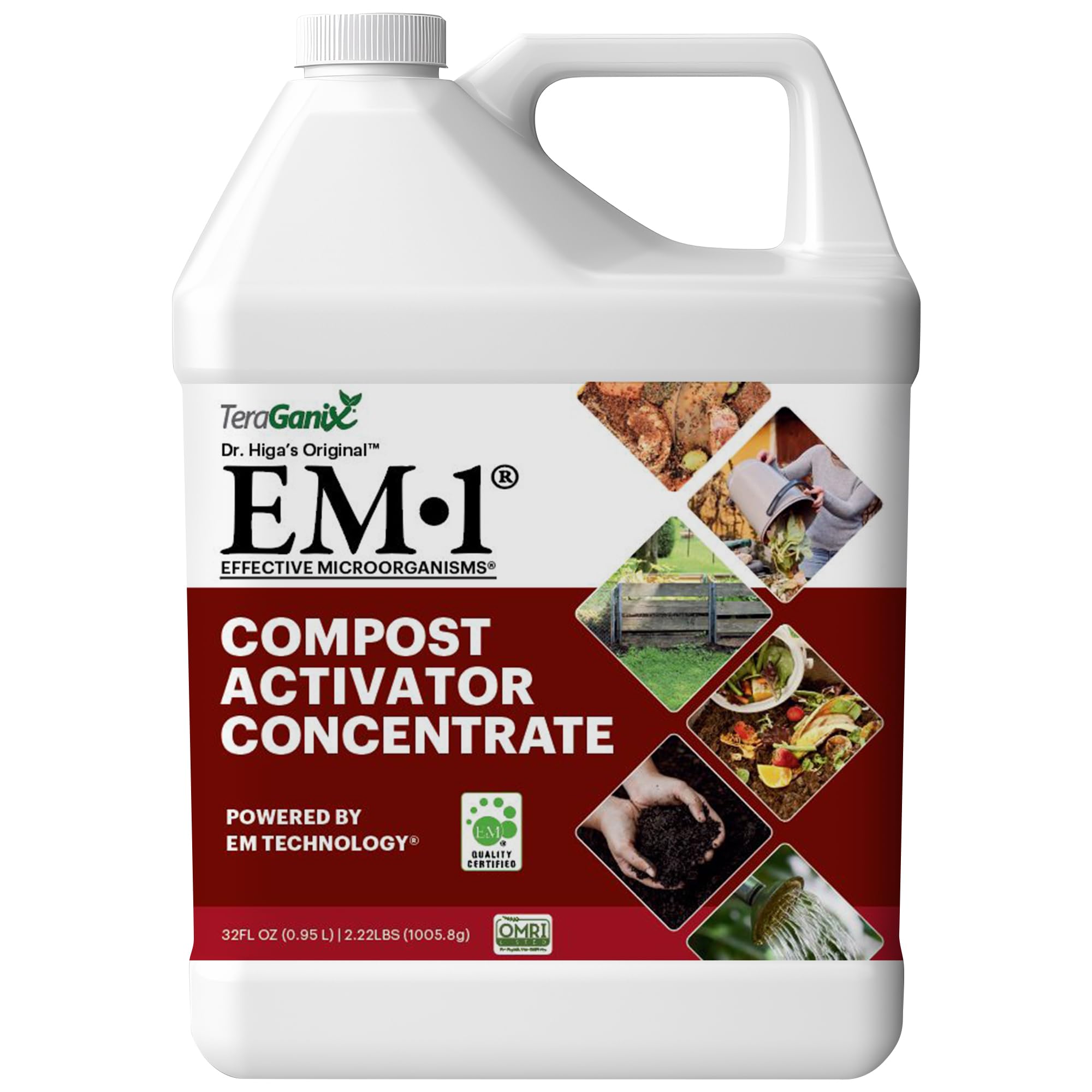What is the trick to make a good compost in short time? Discover Fast Composting Tips!

Composting is an essential practice for sustainable living, turning organic waste into nutrient-rich soil. However, many people shy away from it due to the time it can take to produce usable compost. Fortunately, there are effective strategies to accelerate the composting process without sacrificing quality. In this article, we will explore fast composting tips that will help you create rich, dark compost in a fraction of the usual time. Whether you're a seasoned gardener or a beginner, these tricks will empower you to transform kitchen scraps and yard waste into valuable compost swiftly and efficiently.
What is the Trick to Make Good Compost in a Short Time?
To create high-quality compost quickly, the key lies in maintaining a balanced mix of greens (nitrogen-rich materials) and browns (carbon-rich materials), while also ensuring proper aeration and moisture levels. Incorporating materials such as fruit and vegetable scraps, dry leaves, and grass clippings, and turning the pile regularly promotes aerobic decomposition. Additionally, keeping the compost pile at a proper size, ideally 3 feet by 3 feet, can help retain heat and encourage microbial activity, resulting in faster breakdown of organic materials.
The Role of Greens and Browns in Composting
The balance between greens and browns is crucial for effective composting. Greens include materials like food scraps, coffee grounds, and fresh grass clippings, which are high in nitrogen. In contrast, browns consist of dried leaves, straw, and cardboard, rich in carbon. A good ratio of approximately 30:1 carbon to nitrogen will help promote a healthy compost system, allowing microbes to thrive and accelerate decomposition.
Optimizing Moisture Content
Moisture is essential for composting, as it helps microorganisms break down organic matter. Aim for a moisture level similar to that of a sponge; it should feel damp but not waterlogged. If the compost pile is too dry, microorganisms become inactive, slowing down the process. Regularly check the moisture level and, if necessary, add water or dry materials to maintain the right balance.
Aeration: The Secret to Faster Decomposition
Aeration is vital in composting, as it provides oxygen to the microorganisms that facilitate the breakdown of organic matter. To enhance aeration, turn or mix the compost pile every few weeks. This not only introduces fresh air but also helps distribute moisture and temperature evenly throughout the pile, speeding up the composting process and preventing unpleasant odors caused by anaerobic conditions.
Size Matters: Ideal Dimensions for Composting
The size of your compost pile can greatly influence its efficiency. An ideal compost pile should be at least 3 feet by 3 feet, allowing it to retain heat while still ensuring adequate airflow. Smaller piles may not generate enough heat for rapid decomposition, while larger ones can become compacted, restricting airflow and slowing down the process. Maintaining the right size helps achieve a balance between heat and oxygen supply.
Turning the Compost: How Often Should You Do It?
Turning your compost pile is essential for maintaining aeration and promoting even decomposition. You should aim to turn the pile every 1 to 3 weeks, depending on its size and material makeup. Frequent turning allows heat to escape but is necessary to keep microorganisms thriving and ensure that all materials break down uniformly. Monitoring the temperature of your compost can guide you on when it’s most beneficial to turn it for optimal results.
| Aspect | Importance |
|---|---|
| Greens | High in nitrogen, essential for microbial growth |
| Browns | Rich in carbon, balances the compost pile |
| Moisture | Facilitates microbial activity and breakdown |
| Aeration | Provides oxygen, prevents anaerobic conditions |
| Size | Maintains heat and airflow for rapid composting |
How to make compost break down quickly?

To make compost break down quickly, there are several essential factors to consider. By optimizing conditions in your compost pile or bin, you can significantly speed up the decomposition process. Here are some key strategies:
Balance Carbon and Nitrogen
Maintaining an appropriate ratio of carbon (browns) to nitrogen (greens) is critical for quick composting. A balanced mix enhances microbial activity, which facilitates faster breakdown.
- Carbon sources: Include dry leaves, straw, or cardboard.
- Nitrogen sources: Add grass clippings, kitchen scraps, or manure.
- Ideal ratio: Aim for a 30:1 ratio of carbon to nitrogen.
Maintain Moisture Levels
Moisture content is vital for microbial activity. If the compost is too dry, microorganisms cannot thrive; too wet, and it may become anaerobic.
- Check moisture: The compost should feel like a wrung-out sponge.
- Watering: Add water during dry spells to maintain proper moisture.
- Drainage: Ensure compost has good drainage to prevent waterlogging.
Turn the Compost Regularly
Aerating your compost by turning it helps introduce oxygen, which is essential for aerobic decomposition. This also helps to speed up the process.
- Frequency: Turn the pile every 1 to 2 weeks.
- Tools: Use a pitchfork or compost aerator for turning.
- Mixing: Ensure even distribution of materials when turning.
Chop or Shred Materials
Smaller pieces of organic material decompose faster than larger ones. Chopping or shredding increases the surface area available for microbes.
See also:
- Shredding: Use a yard shredder or compost grinder.
- Chopping: Cut kitchen scraps into smaller pieces.
- Homogeneity: Aim for similar sizes of materials to promote even composting.
Add Compost Activators
Using compost activators can introduce beneficial microbes that enhance decomposition. Many activators are nutrient-rich and help boost the composting process.
- Commercial activators: Look for brands designed to accelerate composting.
- Home remedies: Use well-rotted manure or finished compost.
- Organic options: Coffee grounds and certain garden soil types can serve as activators.
What is the secret to making good compost?

The secret to making good compost lies in understanding the right balance of materials and managing the composting process effectively. Composting is a natural process that transforms organic waste into nutrient-rich soil amendments, but achieving optimal results requires attention to several key factors.
Understanding Compost Ingredients
To create quality compost, it’s essential to combine the right ingredients. Compost is made from two primary types of materials: greens and browns. Greens are nitrogen-rich materials, while browns are carbon-rich.
- Greens: These include kitchen scraps such as fruit and vegetable peels, grass clippings, and coffee grounds. They provide the nitrogen necessary for microbial activity.
- Browns: These consist of dried leaves, straw, cardboard, and wood chips. They supply the carbon needed to balance the nitrogen from greens, facilitating healthy decomposition.
- Proportions: A general rule is to maintain a ratio of 2:1 or 3:1 browns to greens to ensure efficient composting.
Maintaining Proper Moisture Levels
Moisture is crucial in the composting process. Compost needs to be moist, but not too wet, as excessive water can suffocate microorganisms and slow down decomposition.
- Moisture Testing: The compost should feel like a wrung-out sponge. If it feels too dry, add water gradually.
- Watering Techniques: When adding water, do it evenly throughout the compost pile rather than drenching it all at once.
- Drainage: Ensure that the compost bin has adequate drainage to allow excess water to escape and prevent anaerobic conditions.
Turning the Compost
Aeration is an important aspect of composting. Regularly turning the compost pile helps introduce oxygen, which is vital for aerobic microorganisms that break down the materials.
- Frequency: Turn the compost every few weeks, depending on the pile size and temperature.
- Methods: Use a pitchfork or compost aerator to mix the materials thoroughly, ensuring oxygen penetrates all parts of the pile.
- Temperature Monitoring: Keep an eye on the internal temperature of the pile. A hot compost pile (between 130°F to 160°F) indicates active microbial decomposition.
Observing the Composting Process
It's important to observe the changes in your compost over time. This allows you to recognize when it is ready to use and to troubleshoot any issues that may arise.
- Visual Changes: The materials should break down into dark, crumbly soil-like particles, indicating completed compost.
- Smell: A properly decomposed compost should have an earthy, pleasant smell. Any foul odors may indicate problems with the aeration or moisture levels.
- Timeframe: The composting process typically takes 2 to 6 months, depending on the conditions and materials used.
Using the Right Tools
The tools you use can impact the efficiency and ease of the composting process. Having the right equipment makes managing the compost much simpler.
- Compost Bin: Choose a compost bin that suits your space and volume of waste. Options include tumblers, bins, or open piles.
- Tools: Equip yourself with a pitchfork, shovel, and moisture meter for effective management.
- Thermometer: A compost thermometer can help you monitor the internal temperature to ensure that the composting process is proceeding optimally.
How to make compost in 3 days?

To make compost in just three days, you need to accelerate the composting process by creating the right conditions for microorganisms to thrive. The key ingredients are a balance of greens (nitrogen-rich materials) and browns (carbon-rich materials), alongside water and air circulation. Here’s a detailed guide.
Ingredients for Quick Composting
To achieve fast composting, gather the necessary ingredients. Ideally, you should have a mix of nitrogen-rich greens and carbon-rich browns. Key ingredients include:
- Grass clippings: Rich in nitrogen, they decompose quickly.
- Kitchen scraps: Vegetable peels, fruit waste, and coffee grounds are excellent.
- Dry leaves: A good source of carbon that balances moisture from greens.
- Small branches or straw: Helps aerate the pile.
- Water: Needed to maintain moisture for microbial activity.
Preparing the Compost Pile
The arrangement of your compost pile is crucial for rapid breakdown. Proper layering and compacting can significantly enhance the composting process.
- Layering: Start with a base of coarse materials like small branches for aeration.
- Adding Layers: Alternate layers of greens and browns. Aim for a ratio of 2:1 greens to browns.
- Moistening: Water each layer lightly as you build the pile to maintain moisture without making it soggy.
Aeration Techniques
Aeration is essential for promoting microbial activity and avoiding odors. Here are effective methods for ensuring your compost pile has good airflow:
See also:
- Turning the pile: Use a pitchfork or shovel to turn the compost pile once a day to mix it and introduce oxygen.
- Using a compost aerator: This tool can help penetrate deeper into the pile for thorough aeration.
- Maintaining pile height: Keep your pile at least 3 feet tall to create internal heat while allowing for air exchanges.
Monitoring Temperature and Moisture
Keep track of the temperature and moisture of your compost pile to ensure optimum conditions for the microorganisms that break down organic matter.
- Temperature checks: Use a compost thermometer to monitor temperatures; aim for 130°F to 160°F for effective breakdown.
- Moisture levels: Your compost should be as damp as a wrung-out sponge. Adjust as necessary by adding water or dry materials.
- Signs of readiness: When the pile cools down, it indicates that decomposition is nearly complete; a pleasant earthy smell suggests successful composting.
Using Your Finished Compost
Once the compost is ready after three days, it can be used in various ways to improve soil health and plant growth.
- Garden beds: Mix in compost to enrich the soil and improve structure.
- Potted plants: Use compost as a nutrient-rich amendment for potting soil.
- Lawn care: Spread a thin layer of compost over the lawn for natural fertilization.
What are the best activators for composting?

The best activators for composting are substances that help accelerate the decomposition process by adding nitrogen and promoting microbial activity. These activators are crucial for ensuring that compost piles heat up efficiently, leading to faster breakdown of organic materials. Here are some of the top activators for composting:
1. Green Materials
Green materials are rich in nitrogen and are vital for composting success. They provide the energy necessary for microorganisms to thrive.
- Grass clippings: Freshly mowed grass is an excellent source of nitrogen.
- Fruit and vegetable scraps: Peelings, cores, and other leftovers boost nitrogen levels.
- Coffee grounds: Not only do they add nitrogen, but they also attract earthworms when mixed in.
2. Manure
Animal manure serves as a powerful compost activator due to its high nitrogen content and beneficial microorganisms.
- Cow manure: Often regarded as one of the best compost activators.
- Chicken manure: Extremely rich in nitrogen and encourages rapid decomposition.
- Horse manure: A great addition, although it should be aged to avoid seeds.
3. Composting Activators
Commercial composting activators are specifically formulated products designed to enhance the composting process.
- Pelleted activators: Easy to use and often contain a mix of greens, microbes, and minerals.
- Worm castings: Packed with beneficial bacteria that can speed up the decomposition process.
- Plant-based enzymes: Help break down organic matter more effectively.
4. Water
Moisture is a critical component, as too dry a pile can slow down microbial activity, whereas too wet can lead to anaerobic conditions.
- Proper irrigation: Ensures that compost remains damp but not soggy.
- Adding liquid activators: Like compost tea, can introduce additional nutrients and microbes.
- Regular turning: Helps maintain moisture levels throughout the compost.
5. Aeration
Aeration is vital for maintaining an adequate oxygen level, which is crucial for aerobic decomposition.
- Turning the pile: Regularly mixes materials and introduces oxygen.
- Using a compost aerator: A tool that creates air pockets and helps with circulation.
- Adding coarse materials: Like straw or small branches can help maintain airflow.
Questions from Our Readers
What materials are best for quick composting?
To achieve quick composting, use a balance of green materials like kitchen scraps and nitrogen-rich leaves, and brown materials such as dry leaves, straw, and cardboard. The right mix helps maintain the heat in the compost pile, accelerating the decomposition process.
How often should I turn my compost pile?
Turning your compost pile every 1-2 weeks is ideal for speeding up the composting process. This aeration provides essential oxygen to microorganisms, promoting faster breakdown of organic materials and preventing any foul odors.
What is the ideal size for a compost pile?
An ideal compost pile is around 3 feet by 3 feet and at least 3 feet tall. This size allows for effective heat retention and sufficient microbial activity while still being manageable for turning and maintaining.
How long does it take to make compost using these methods?
With the right conditions and materials, compost can be ready in as little as 3-4 weeks. Factors such as temperature, moisture, and the balance of greens and browns play a crucial role in determining the speed of the composting process.
See also:

If you want to read more articles like What is the trick to make a good compost in short time? Discover Fast Composting Tips!, we recommend you check out our Compost category.
Leave a Reply
Related Articles